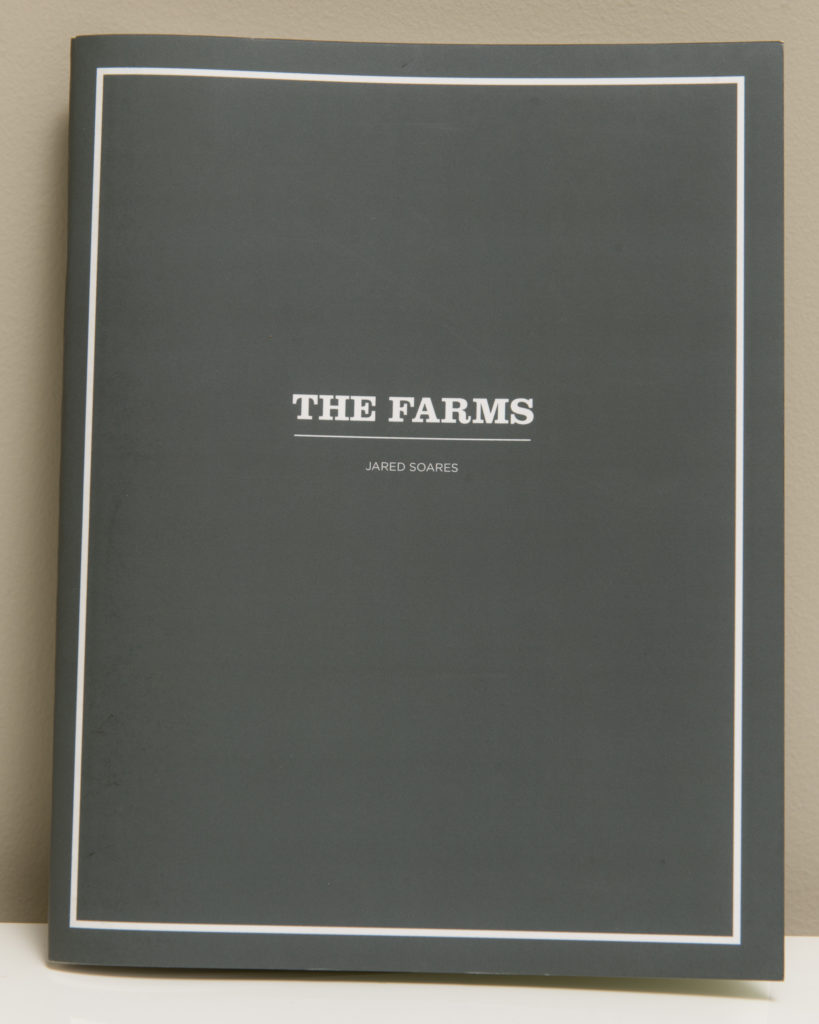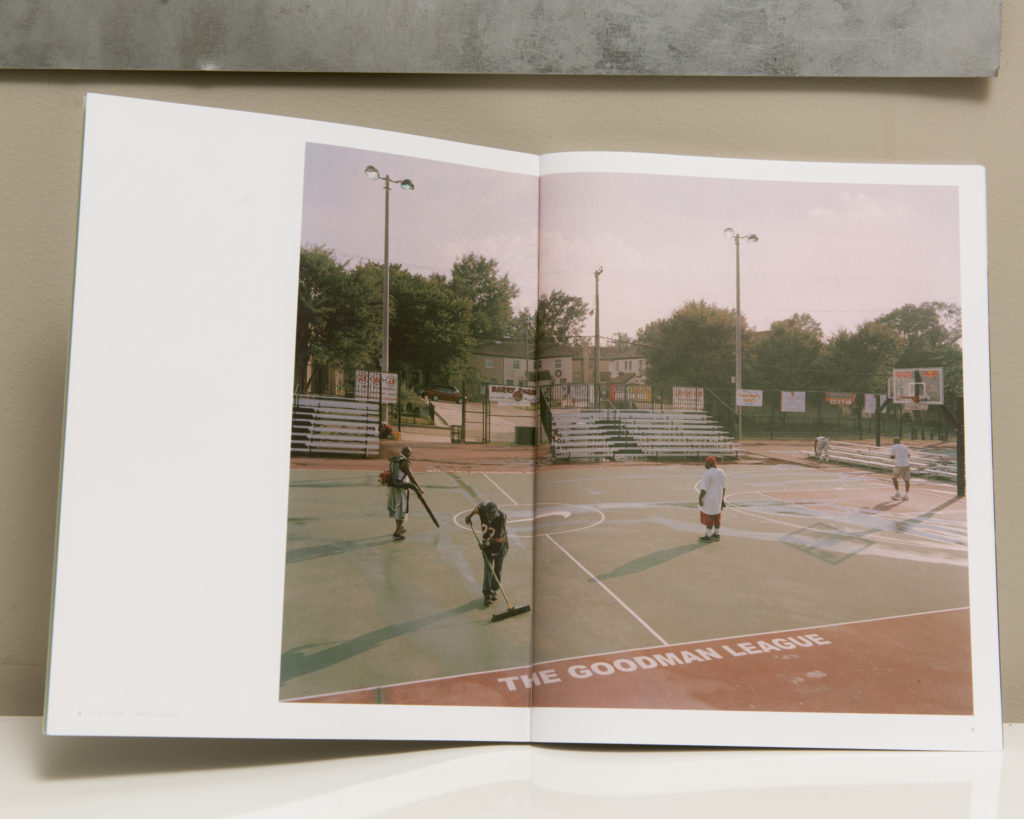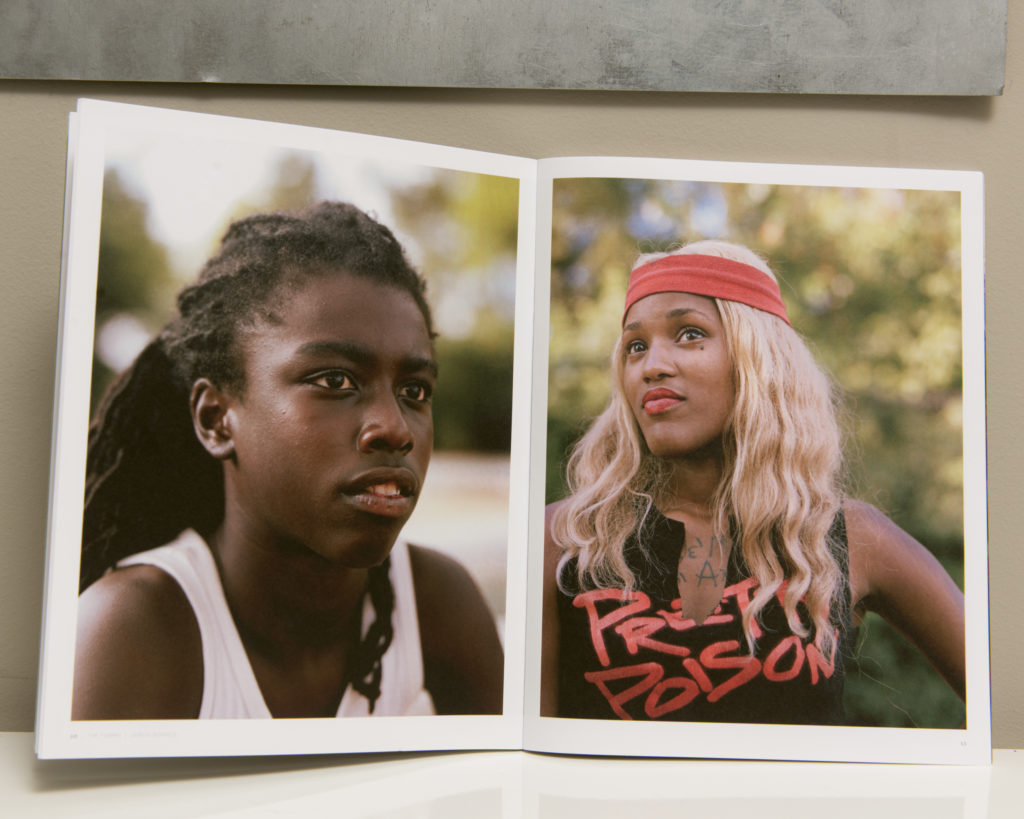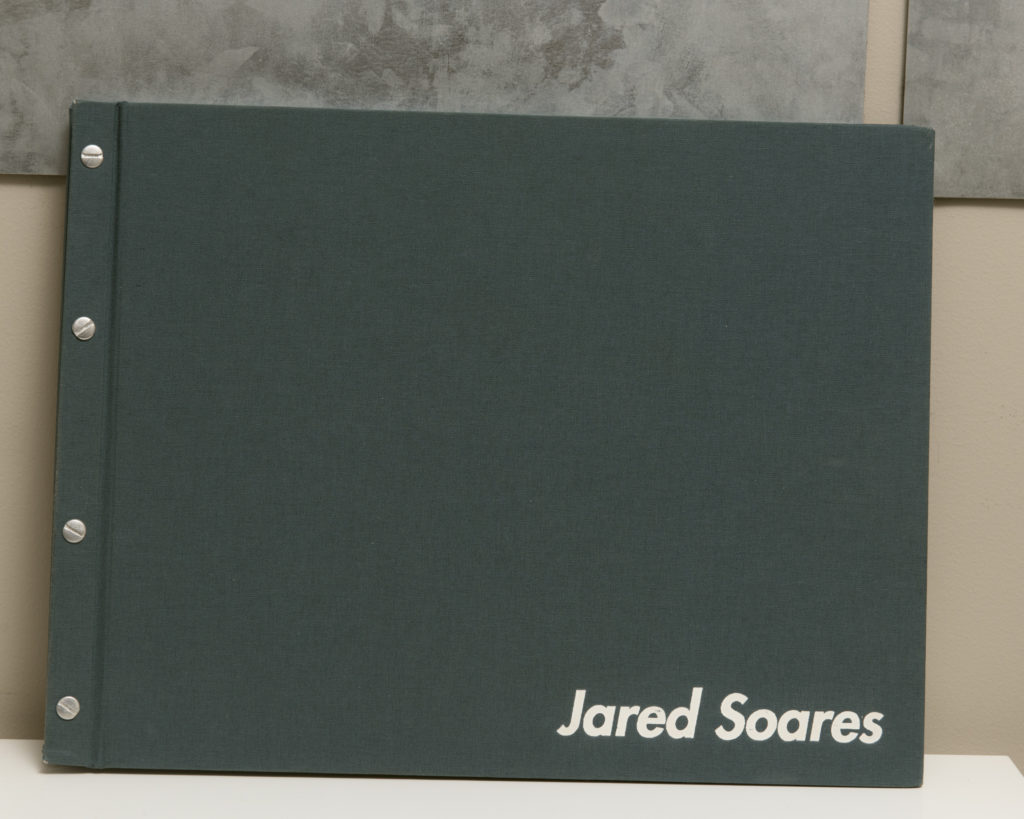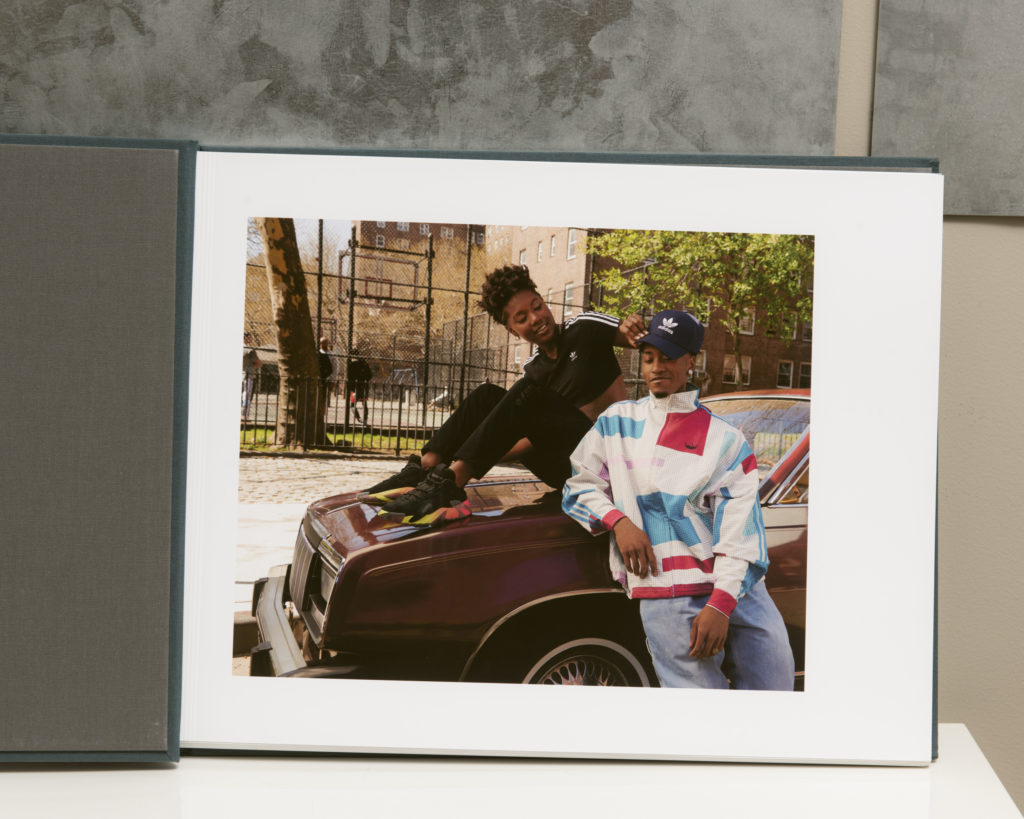Marketing
JS: Be the expert in the room, you need to have a solid understanding of the topic/issue/subject before you log into your email. If you’re proposing an idea to a magazine or a news organization, you need to be able to succinctly convey what the idea is, why it’s important and why it fits with this particular publication. Also, be able to mention, why you are the most qualified to tell this story. The more specific that you can be, the better. If you have examples of photographs related to the idea, its best to attach 1-3 of your strongest images along with 2-3 paragraphs describing the project, how it relates to the client and your approach. Also, be sure to acknowledge the recipient’s humanity, it’s okay to add a “good morning” or “good afternoon” at the top of the message along with a compliment about a recent project that they worked on that you enjoyed- this demonstrates that you are paying attention.

CC: Here is some amazing insight from Yael Malka – Want to Pitch To Magazines? & Pitching The New York Times. Also, from multiple editor’s perspectives – Do’s and Don’t of Pitching to Photo Editors. While there is a lot that goes into it I wanted to quote Yael from when she worked at The Fader on what not to do, as a starting point –
Link to this anwser.A lot of photographers would send a very lazy email: ‘Hey, let me shoot this person for you.’ It would be presumptuous, and a lot of the emails weren’t very thoughtful. It was just, ‘You’re a music magazine. Let me shoot this person who’s a musician and that’s all I have say.’ But there’s a lot more to it. Photo editors want to see that you’ve been thoughtful about it—thoughtful in that you have an angle, and thoughtful in that it makes sense for the publication.
EG: I can think of two really specific successes. Many years ago, I found a cool new agency somewhere on the Internet. They had just started out and were doing some cool small projects. I found their address and sent them a postcard with a funny message. They really liked it and posted it on their blog. I eventually met them in person to say hi. We stayed friendly for years, and last year they asked me to shoot a really great project for a big athletic brand.
Back in 2008, I published a newsprint publication called “Thank God That’s Over.” It was a humorous photo essay taken on a five-day cruise from New Jersey to Bermuda. It was every bit as awful as you can imagine. To this day, people still reference that newsprint thing. I learned that to make good photos is not enough. You have to package them up nicely and deliver it to the world in a format they will enjoy.
JS: This past Fall, I sent an email newsletter to a list made up of mostly photo editors in order to share some recent editorial work. A photo director from a magazine replied and inquired if I was available and interested in working on an assignment later that month.
A couple years ago, I made a booklet to accompany a personal project about a summer basketball league. Unsure of how it happened but the booklet wound up on the desk of an individual who works for a popular sportswear brand. This person ended up hiring me for some of my early commercial work at the brand and later connected me to a creative agency that I still work with today.
CC: I signed with my agent as a result of my “marketing” efforts – they saw my work in a magazine, then they received my email newsletter, after they received my printed promo they invited me in for a meeting.
A client received the same printed promo and held onto it for nine months before the right job came along – a two day ad job.
I cold emailed a handful of editors at the NY Times introducing myself and my work and within 2 months I was hired by two different editors to contribute portraits.
I will also say that the marketing efforts are compounding like it was with my agent and it’s a matter of timing – when the right project comes along and the client remembers your work or happens to see it (somewhere – newsletter, promo, magazine, email) and they’re looking for someone to hire that has your style. Keep at it!
EG: I think about marketing quite a bit. I like to send emails and introduce myself to potential clients and other people who are doing cool work. You have to build your network in order for that network to pay off for you. I don’t have an established workflow for it, but if I find out about a new agency doing cool things from a blog or Instagram post, I try to find out who the art directors are and send them postcards. Maybe I’ll email them and try to set up a meeting. It depends on how much free time I have and how brave I’m feeling that day.
And that hits an important point. You have to be brave. You have to learn to put yourself out there and not get a response from someone. In general, you’ll reach out to 100 people and only 20 of them will respond, and of those you’ll only ever meet five of them in person and maybe one of those people hires you down the line two years from now. So you just spent several hours trying to reach 100 people and you failed 99 times. But that one person. . .
JS: Marketing takes up a lot of space in my world. My approach is intuitive, if I have a cohesive batch of photos that I’m excited about then I know it’s time to get them in front of people. Much like Emiliano, I spend a lot of time scrolling the popular mobile app, Instagram, and when I see a magazine or agency that shared some interesting work, I’ll do the deep dive to figure out who was a part of the project. Then I’ll figure out an obtrusive way to get my work in front of them. Since we’re still in a pandemic, I’m really only using email and social media to reach people. The important thing is to make sure that you’re sharing strong work and consistently reaching out to people.
Link to this anwser.
EG: You can choose to market yourself with big, loud tactics. I’ve chosen a slower approach with my marketing; I’ll call it “white noise marketing.” The secret for me has been to continue to produce quality images and quietly remind people about them. To do this, I like to send people anywhere from five to eight postcards a year and usually write something funny and personalized on the back. I’d hate to be the photographer version of a used car salesman with loud gimmicks and cheap suits.That’s not the association I want people to make when they think about my work.
The focus for me has always been and will always be “make good work.” Of course, I can do things to help promote that work, but if it sucks to begin with, then I’m failing. I’ll continue to self publish and create personal work—that is essential to me as a human and as a brand.

JS: This feels like a cart versus horse query. From my perspective, you need to have the goods before you share them. My focus will always be creating new projects and presenting them in a way that is fully in service of the work. When my work is ready to be shared with clients, I try to be personal and tailored in the marketing approach. This could be in the shape of a direct email or a handwritten letter with a batch of small prints in an envelope. I want the way that I’m reaching out to be consistent with who I am as a person and the feel of my work. Photographs will always lead. Design needs to be utilitarian and current. No gimmicks, no food. Ask yourself these questions, does this feel like me and would I want to receive this?
Link to this anwser.
CC: My 11×17 double-sided matte inkjet printed screw post portfolio (will likely switch to a smaller format once in-person meetings are a thing again because that was a pain in the ass to travel with and ship), recent work/image libraries/motion/personal work on an iPad, and leave-behinds (latest promo, postcards, etc). The iPad is helpful if a client comments on an image in the printed book and you can show them the expanded campaign or project on your iPad. Think about what anecdotes you can share related to the projects or images that you’re showing that can give the client insight into your process and abilities. Bring questions based on the research you’ve done about the client beforehand.
EG: Portfolio and winning attitude.

JS:Bring your portfolio, in-progress projects, your ideas and recent work. Also, it helps to brings questions. This is your opportunity to get to know the client. It is also a situation where you can present your work in a way that it can’t be experienced digitally. Show the clients something that they can’t see on your website or IG.
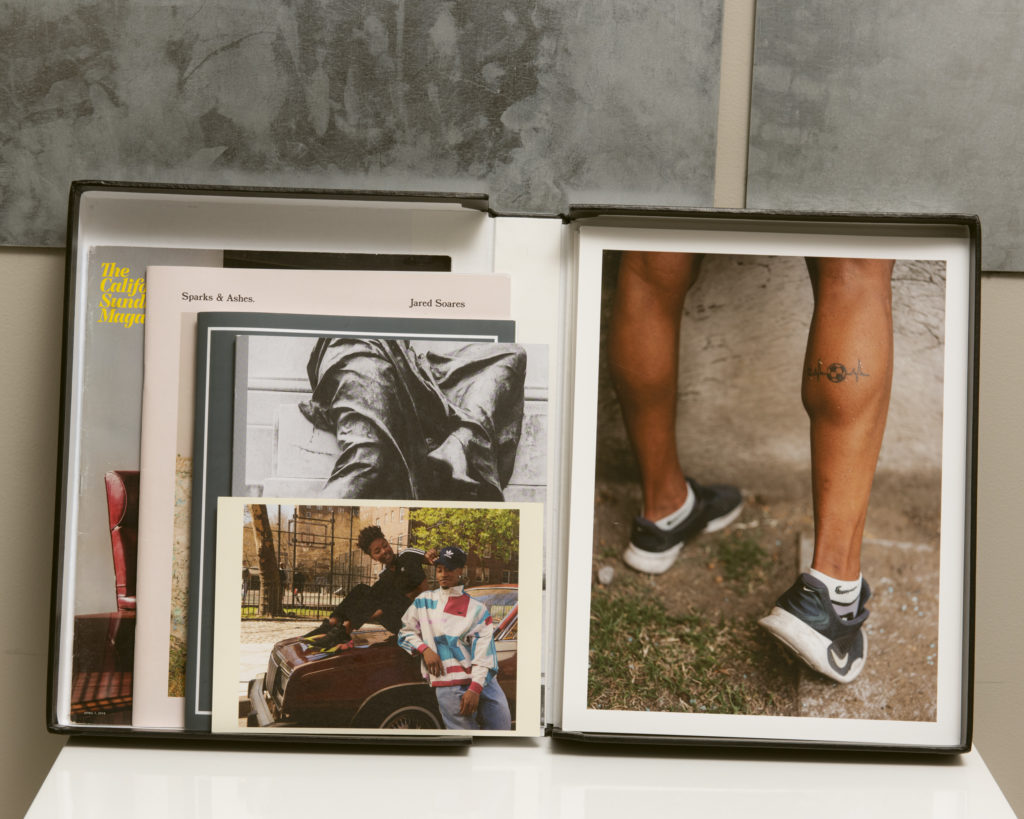
JS: I use a combo of Instagram, Google and Linkedin to figure out contacts and email address styles. Also, I trade contacts with friends and we’ve even created a spreadsheet that we keep updated. Never buy a list because most of the time they are out of date.

CC: I use Mailchimp and have built my list with the help of Hunter.io, Linkedin, reading mastheads, keeping an eye on who other photographers mention and follow on Instagram, my agents, and asking the communities I’m a part of if they can share contacts from specific brands/publications.
Link to this anwser.
JS: A newsletter should be another extension of who you are and what your work is about. It is more than okay to show your personality through the design and voice of it. I like to have at least 3 strong items to share plus a call to action. This could be an editorial assignment that you’re fired up about, a gallery exhibition that you’re participating in, a write up about a project on a website, an in-progress personal project- pretty much anything that is hitting the quality marker and that you’re proud of at the moment. Also, it is important to mention your location as well as your contact info both items should be easy to access. Here is one that I sent earlier this year.
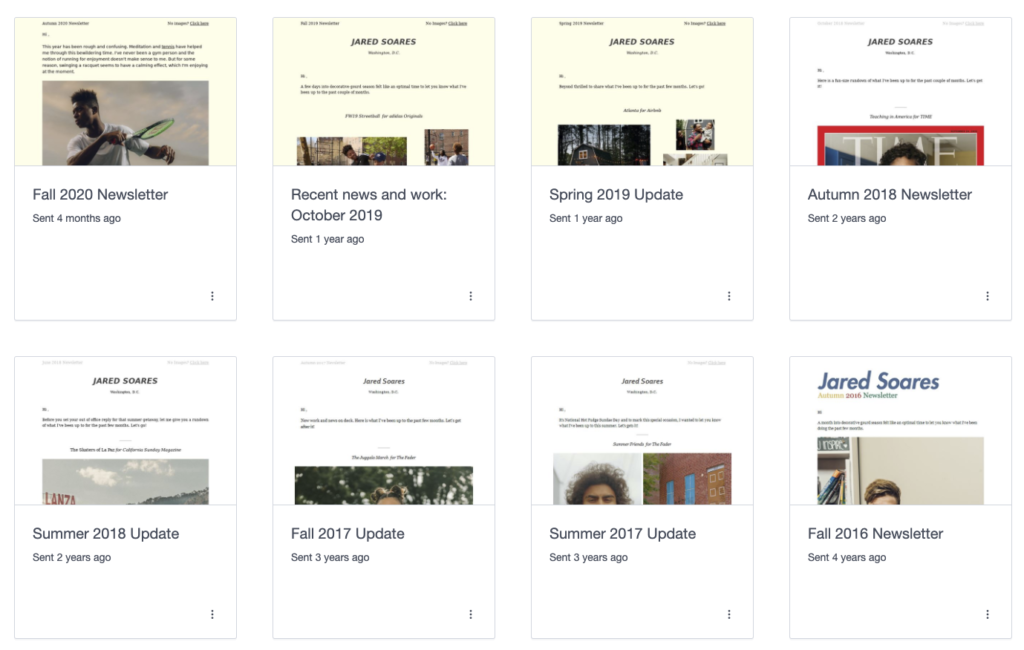
CC: Jared pretty much covered it all, my newsletters are very similar. I try to pick three projects and a few images so recipients can still get something if they look at it for 5 seconds and don’t click to see more or read. You can see my most recent ones here and here.
EG: Every time someone interacts with you, your images, or your brand, you want to reinforce the things you think are the best about you. You should have a clear vision of what your brand stands for and what that looks like. Your newsletter (and everything else in your arsenal) should be in line with that. Some of my most recent newsletters here and here.
Link to this anwser.



